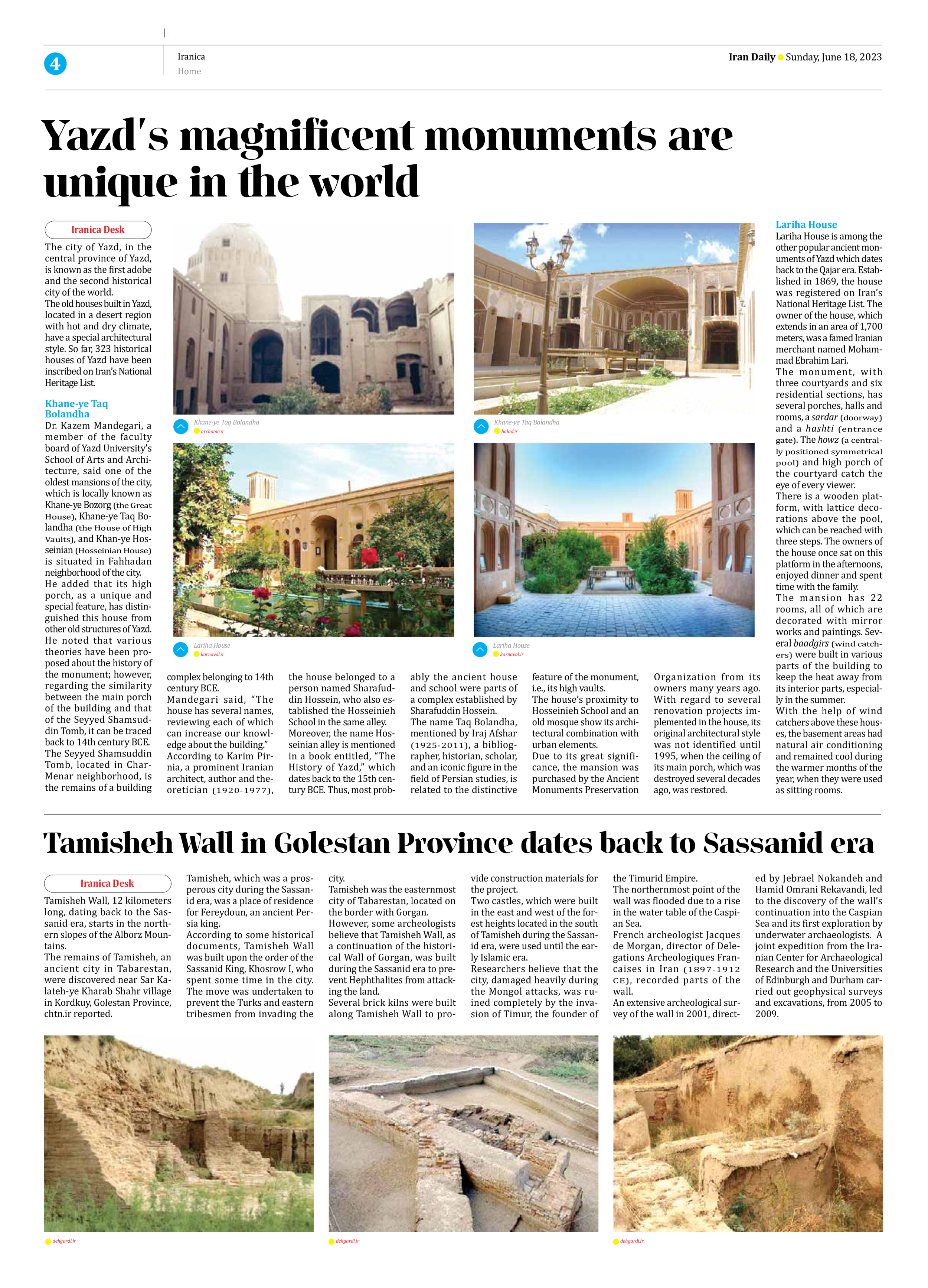
Tamisheh Wall in Golestan Province dates back to Sassanid era
Tamisheh Wall, 12 kilometers long, dating back to the Sassanid era, starts in the northern slopes of the Alborz Mountains.
The remains of Tamisheh, an ancient city in Tabarestan, were discovered near Sar Kalateh-ye Kharab Shahr village in Kordkuy, Golestan Province, chtn.ir reported.
Tamisheh, which was a prosperous city during the Sassanid era, was a place of residence for Fereydoun, an ancient Persia king.
According to some historical documents, Tamisheh Wall was built upon the order of the Sassanid King, Khosrow I, who spent some time in the city. The move was undertaken to prevent the Turks and eastern tribesmen from invading the city.
Tamisheh was the easternmost city of Tabarestan, located on the border with Gorgan.
However, some archeologists believe that Tamisheh Wall, as a continuation of the historical Wall of Gorgan, was built during the Sassanid era to prevent Hephthalites from attacking the land.
Several brick kilns were built along Tamisheh Wall to provide construction materials for the project.
Two castles, which were built in the east and west of the forest heights located in the south of Tamisheh during the Sassanid era, were used until the early Islamic era.
Researchers believe that the city, damaged heavily during the Mongol attacks, was ruined completely by the invasion of Timur, the founder of the Timurid Empire.
The northernmost point of the wall was flooded due to a rise in the water table of the Caspian Sea.
French archeologist Jacques de Morgan, director of Delegations Archeologiques Francaises in Iran (1897-1912 CE), recorded parts of the wall.
An extensive archeological survey of the wall in 2001, directed by Jebrael Nokandeh and Hamid Omrani Rekavandi, led to the discovery of the wall’s continuation into the Caspian Sea and its first exploration by underwater archaeologists. A joint expedition from the Iranian Center for Archaeological Research and the Universities of Edinburgh and Durham carried out geophysical surveys and excavations, from 2005 to 2009.







